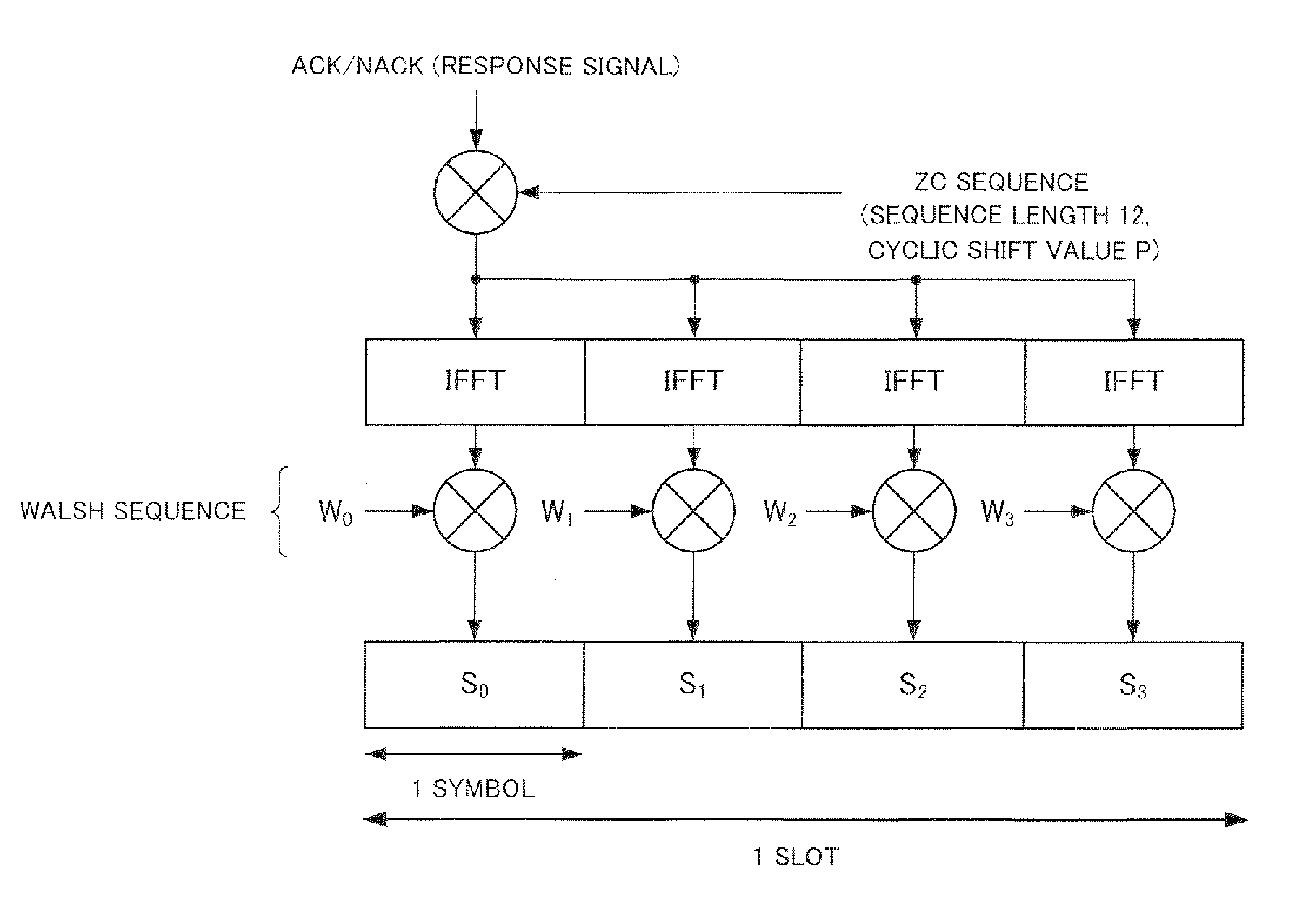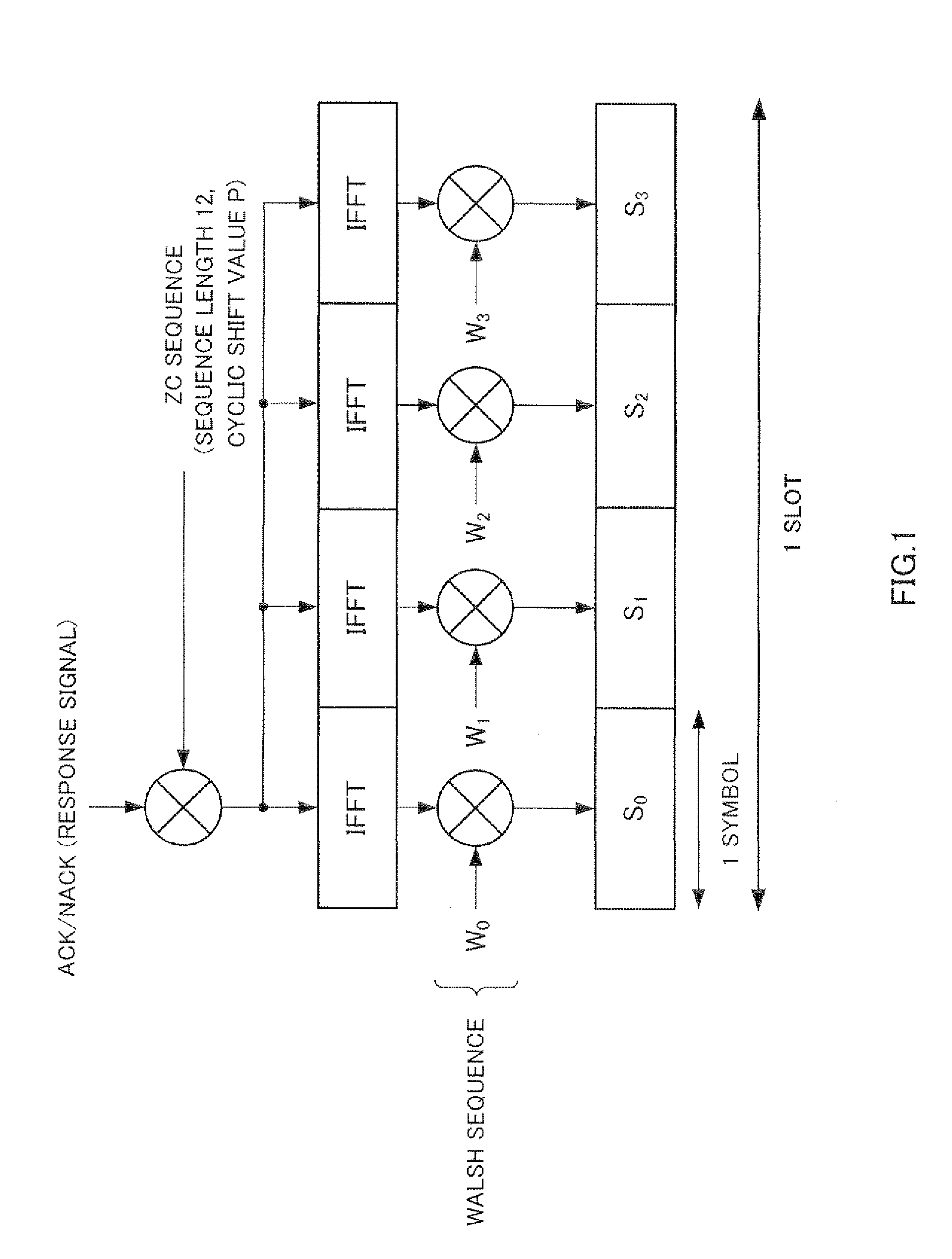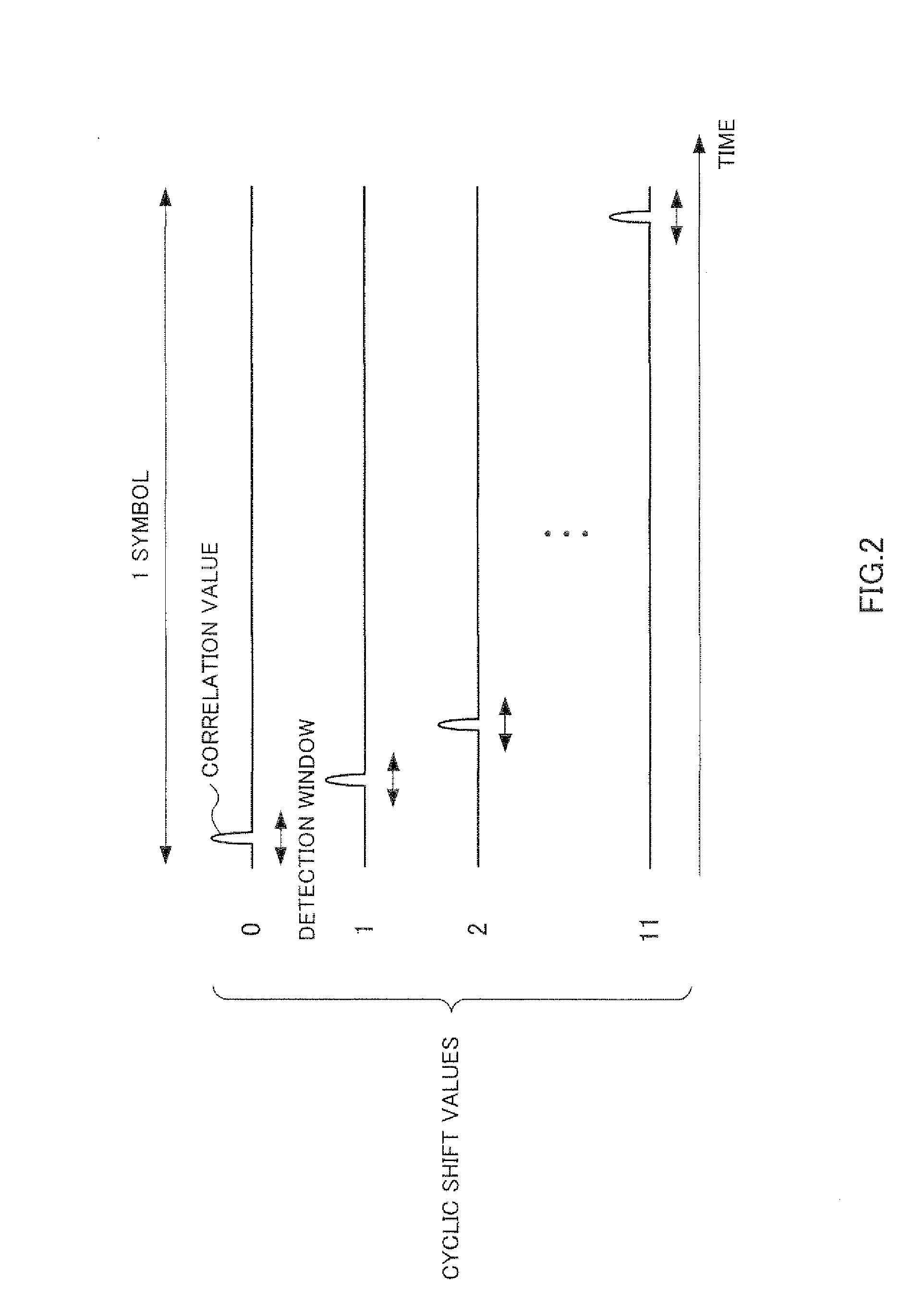Radio communication device and response signal diffusion method
a technology of radio communication and response signal, applied in the direction of multiplex communication, orthogonal multiplex, wireless commuication services, etc., to achieve the effect of suppressing inter-code interferen
- Summary
- Abstract
- Description
- Claims
- Application Information
AI Technical Summary
Benefits of technology
Problems solved by technology
Method used
Image
Examples
embodiment 1
[0036]The configuration of base station 100 according to Embodiment 1 of the present invention is shown in FIG. 8, and the configuration of mobile station 200 according to Embodiment 1 of the present invention is shown in FIG. 9.
[0037]To prevent the description from becoming complex, FIG. 8 shows components relating to the transmission of downlink data and uplink reception of an ACK / NACK signal corresponding to that downlink data, closely related to the present invention, while components relating to the reception of uplink data are omitted from the drawing and the description. Similarly, FIG. 9 shows components relating to the reception of downlink data, and uplink transmission of an ACK / NACK signal corresponding to that downlink data, closely related to the present invention, while components relating to the transmission of uplink data are omitted from the drawing and the description.
[0038]In the following description, a case is described in which a ZC sequence is used for first s...
embodiment 2
[0081]A base station and mobile station according to Embodiment 2 of the present invention have the same kind of configurations as a base station (see base station 100 in FIG. 8) and mobile station (see mobile station 200 in FIG. 9) according to Embodiment 1, and differ only in regard to part of the processing performed by the control channel allocation section (control channel allocation section 102 shown in FIG. 8).
[0082]FIG. 12 is a drawing showing CCEs corresponding to PUCCHs used by mobile stations, which are referenced by a control channel allocation section according to this embodiment. FIG. 12 is basically similar to FIG. 10, and therefore only points of difference will be described here.
[0083]As shown in FIG. 12, a base station according to this embodiment employs adjacent CCEs #3 and #15 following a cyclic shift value including a smaller number of CCEs for ACK / NACK use among cyclic shift values including CCEs for ACK / NACK use as CCEs for CQI use. By this means, the number ...
embodiment 3
[0086]In Embodiment 3 of the present invention, control channel allocation will be described for a case in which a cyclic shift interval between PUCCHs used by mobile stations is 3 or more.
[0087]A base station and mobile station according to Embodiment 3 have the same kind of configurations as a base station (see base station 100 in FIG. 8) and mobile station (see mobile station 200 in FIG. 9) according to Embodiment 1, and differ only in regard to part of the processing performed by the control channel allocation section (control channel allocation section 102 shown in FIG. 8),
[0088]FIG. 14 is a drawing showing CCEs corresponding to PUCCHs used by mobile stations, which are referenced by a control channel allocation section according to this embodiment. FIG. 14 is basically similar to FIG. 10, and therefore only points of difference will be described here.
[0089]As shown in FIG. 14, a base station according to this embodiment employs CCEs #2 and #10 as CCEs for CQI use, and makes CC...
PUM
 Login to View More
Login to View More Abstract
Description
Claims
Application Information
 Login to View More
Login to View More - R&D
- Intellectual Property
- Life Sciences
- Materials
- Tech Scout
- Unparalleled Data Quality
- Higher Quality Content
- 60% Fewer Hallucinations
Browse by: Latest US Patents, China's latest patents, Technical Efficacy Thesaurus, Application Domain, Technology Topic, Popular Technical Reports.
© 2025 PatSnap. All rights reserved.Legal|Privacy policy|Modern Slavery Act Transparency Statement|Sitemap|About US| Contact US: help@patsnap.com



